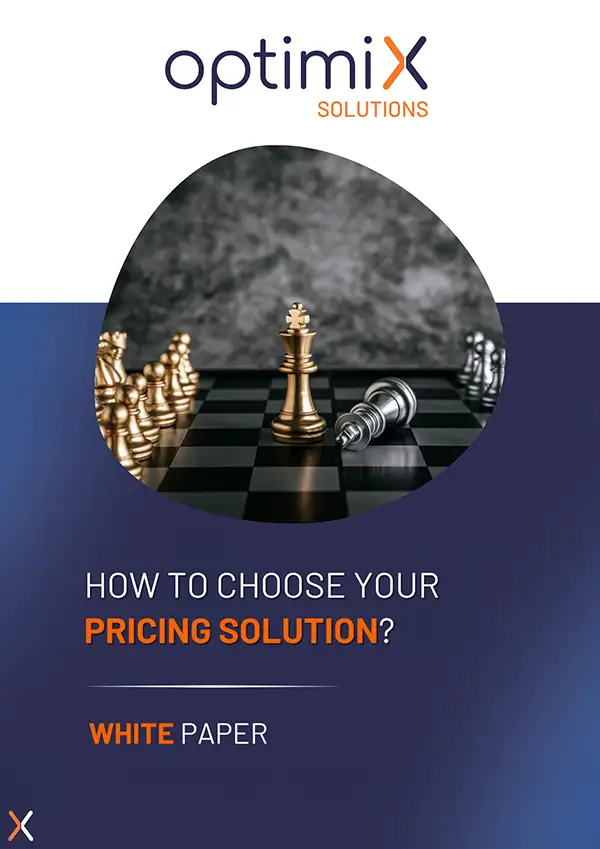In the world of retail, setting the price of a product or service is neither intuitive nor traditional. It’s a strategic, rational exercise, often decisive for a company’s profitability. A good pricing strategy is not based on cost alone, but takes into account perceived value, price positioning, competitors’ pricing strategies, fixed and variable cost structure, and price acceptability to potential customers.
Pricing: a real strategic lever
Much more than a simple means of optimizing revenues, a pricing strategy acts as a global management tool. It has a direct impact on several key aspects of your business:
- Brand image
Price sends a strong signal about your market position. A high price can reinforce a premium perception, while a low price can evoke accessibility or, on the contrary, raise doubts about quality. It therefore contributes to building or reinforcing your positioning. - Acquiring new customers
An attractive price, in line with perceived value, can accelerate conversion. Depending on your target, an aggressive entry price (penetration, freemium) can make all the difference against more established competitors. - Loyalty and retention
Transparent, progressive pricing policies (personalized offers, targeted discounts, loyalty rates, etc.) reinforce trust and encourage customers to stay. Pricing becomes a relationship-building tool. - Overall company profitability
Well-calibrated pricing maximizes margins without sacrificing volume. By combining data, forecasting and dynamic adjustment, pricing becomes a direct driver of profitability.
To fully integrate these issues, it is essential that pricing strategy is aligned with marketing, product, sales and financial decisions. Pricing then becomes the strategic link between your internal objectives and market expectations. You therefore need to master the different pricing strategies to know which one is right for your price positioning.
Determining your price: a 5-step method
Determining the price of a product requires a rigorous analysis phase. First, all fixed and variable costs must be evaluated, to determine the break-even point. The next step is to define prices according to customer segmentation, usage patterns, and price sensitivity observed through tests or surveys. The price will be set according to the targeted sales margin and competitors’ pricing policies.
It’s also a good idea to include indicators such as breakeven point, margin ratio and total cost of ownership (TCO). At this stage, the aim is not yet to choose an optimum price, but to establish a coherent price range, within which you can then adjust the price according to market feedback.
It is therefore essential to master the various to implement a pricing strategy.
Step 1: Perform an internal analysis
Before setting your prices, it’s essential to assess your own resources, constraints and ambitions. This introspection will help you avoid costly mistakes.
Define your financial and business objectives
Would you like to :
- Maximize your margin?
- Gain market share fast?
- Reinforce your premium image?
- Make your offer more accessible to new segments?
These objectives naturally lead to different strategies: skimming to maximize profitability, penetration to capture volume, alignment to play the stability card, and so on.
Control your cost structure
Precise knowledge of your fixed and variable costs enables you to define a floor price (below which you lose money) and calculate an optimum margin. This knowledge is essential for arbitrating between profitability and competitiveness.
Assess your operational capabilities
If you opt for an aggressive pricing strategy, are you prepared to cope with an increase in volumes? Do you have the resources, stocks, teams and tools to maintain quality and deadlines without hidden extra costs?
Clarify your brand image
Price is a strong signal to the market. A premium brand cannot adopt a low-cost positioning without creating dissonance. Your pricing strategy must be consistent with your brand identity, your values and the promise you make to your customers.
Step 2: Observe your external environment
Your market, your competitors and your customers are changing. It’s essential to integrate these factors into your strategic thinking.
Studying demand and price elasticity
How price-sensitive are your customers? Some are primarily interested in the lowest price, while others are willing to pay more for quality, experience or service. Measure their ability to pay, test price variations and identify perceived value levers.
Active competitive intelligence
Continuously analyze your competitors’ pricing practices: posted prices, promotions, included services, price ranges… This will enable you to spot discrepancies, detect trends and position your offer in a way that sets it apart.
Take regulatory constraints into account
In some sectors (pharmaceuticals, energy, telecommunications, etc.), prices are regulated. Take into account the legal frameworks in force, but also the tacit practices of the sector, to avoid distortions or sanctions.
Adapting to the product life cycle
Each product life cycle phase calls for a different pricing strategy:
- Launch: penetration strategy (attractive price) to attract customers quickly, or skimming (high price) to enhance innovation.
- Growth: adjustments according to customer feedback, competition and production capacity.
- Maturity: alignment with the market or move upmarket through added value.
- Decline: gradual reduction to clear stocks or repositioning to give the product a second life.
Step 3: Choose the right pricing strategy
Depending on your business model, product cycle and targets, you can choose from several strategies:
- Skimming: start with a high price to attract customers with a high willingness to pay, then gradually lower it. Particularly effective for innovations, technical products or premium brands.
- Penetration: launch a low-cost offer to rapidly conquer market share. Ideal for new entrants or SaaS models.
- Alignment: position yourself within the market average and leverage other levers (service, experience, logistics, image).
- Freemium, upselling, bundling: hybrid strategies for offering free or low-cost entry, with paid options or valued packages.
Step 4: Manage and adjust your pricing strategy
Setting a price is not enough: it must be tested, monitored and optimized on an ongoing basis. Pricing is a living lever that evolves with the market, buying behavior and your own objectives. To achieve this, you need to rely on advanced management tools such as pricing software like XPE: Optimix Pricing Analytics, a 360° pricing software that lets you manage your pricing strategy in real time, using reliable data.
Monitor the right indicators Measure regularly:
- Unit and overall margin
- Price elasticity
- Conversion rate
- Average shopping basket
- Customer feedback and satisfaction
This data, cross-referenced with real-time dashboards, enables you to adapt your pricing strategy in an agile and proactive way.
Optimix XPA: the intelligent ally for precise pricing
The Optimix XPA solution has been designed to support companies in setting prices, monitoring sales prices and constantly adapting to their environment. Thanks to its dynamic pricing engine, it can determine prices based on precise data (competition, purchase price, sales history, seasonality), simulate skimming, penetration or price alignment strategies, and continuously optimize the price structure.
It facilitates the adjustment of sales prices in line with actual behavior, anticipates the effects of a price cut or price increase on gross margin, and ensures that every price set is profitable and aligned with your pricing policy objectives. With Optimix XPA, you can offer consistent, competitive and evolving prices – and above all, adapted to each customer segment, as part of a data-driven pricing strategy.
Common mistakes to avoid
Don’t set your prices too high or too low by default. A price that is too high and poorly justified can block acquisition, while a price that is below cost will condemn you to unprofitable growth. Another common mistake is to align prices without differentiation, which prevents you from justifying your price against the competition. Finally, don’t neglect the product life cycle: a price can evolve according to market maturity and the marketing strategy adopted.
Pricing is a discipline in its own right, at the crossroads of marketing mix, finance and customer experience. In a SaaS model, where value is diffused over time, knowing how to determine the right price means steering your growth trajectory. You have to take into account cost, psychological acceptability, direct and indirect costs, and above all perceived value. It’s a subtle trade-off, but also a powerful lever for profits and differentiation.









